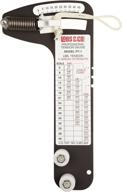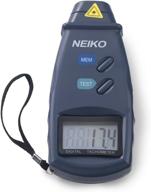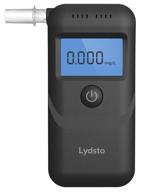
Review on Enhanced Visibility Fluke 4550041 Stroboscope with Dual LED Lights by Brad Schaefer

Compact, powerful, bright and versatile
Items for you! We received this device in our labs about a month ago and ran some tests on it. At the moment we are very impressed with the possibilities. At first glance, the price might seem a little daunting, but once you start analyzing the features and capabilities of this device, it becomes clear why Fluke priced it at nearly $1,000! In some other tests we ran with strobes, we found limitations that were undesirable, such as: E.g. slow frequency updates, limited run and cooldown times, limited functions and so on. All of these undesirable properties are missing from the new 820-2 LED Strobe Light. The instrument is supplied in a beautiful Fluke branded soft hard case with flash, manual, certificates, 3 AA batteries and a small 3.5mm external trigger adapter for use with an external trigger source. The device is lightweight, fits comfortably in your hand and the flash activation button is easy to use. The unit feels solid, as one would expect from Fluke. The strobe window has 7 very bright LEDs arranged in a circle. That surprised us the most, the intensity of the light level. It's reasonable to assume that increasing the flash rate will reduce flash intensity, but it'll still be far brighter than most devices we've tested in the past. The LCD display is clear and easy to read, although some of the icons are a bit tricky for forward-thinking people. Some of the features include the following: 1) Adjustable pulse width in microseconds. 2) Adjustable pulse width in degrees. 3) 6-digit display including decimals. (00000.0)4) Positive or negative trigger (selectable)5) Pulse divider 1 to 255.6) FPM or Hz selection.7) Pulse delay in degrees.8) Pulse delay in milliseconds.9) Low battery indicator Defaults to 1000 FPM set (16.7 Hz), pulse 333 µs (pulse 2 degrees), delay 0 degrees, external trigger off. You can easily return the device to this state at any time by pressing the x2 and /2 buttons at the same time. It helps if you factory reset the device in case something becomes unusable. The control panel below the display consists of 4 buttons Power, Setup, x2 and /2. Customization gives you access to all features, allowing you to customize the device to suit your needs. The x2 and /2 buttons either double the flash rate or halves the flash rate, which is good for ascertaining that you are reading the correct RPM of the rotor and not the harmonic. The trigger button can be pushed up or down to increase or decrease the flash rate. The speed will gradually increase or decrease depending on how long the button is held down. Quickly pressing the button increases or decreases the frequency by 0.1 FPM or 1 FPM depending on which band you are using. Pressing and holding will incrementally increase or decrease the unit in large increments to quickly reach the desired flash rate. The specs are very good, much better than other devices we've tested. Accuracy is respectable, 0.02% from 30 to 300,000 fpm or 0.5 Hz to 5000 Hz. Resolution is 0.1 fpm at best and 1 fpm at worst or 0.1 Hz to 1 Hz. From 30 FPM/0, 5 Hz to 999 FPM/999 Hz has a resolution of 0.1 FPM/Hz, anything above that is 1 FPM or 1 Hz. The color temperature of the LEDs is 6500K bright white light with an output of 4800 lux at 6000 FPM at 30°C (11 .9 inches). Our test of this light intensity read from 4200 lux to 5400 lux averaging around 4800 lux. We have included a 6000 fpm test chart (see attached photo). The 820-2 was about 12 inches from the sensor, and we ran the experiment at 3000 samples per second for 50 ms. Turning the LEDs on and off was impressive, much better than a typical flash. We tested the device on a variety of fans, motors, and vibration materials, and each test was accurate and impressive. An external trigger can also be used to synchronize the 820-2 to a rotating source, allowing for extremely accurate velocity calibration for that source. There are many other applications that can be used with an external trigger that can accept an input voltage of 3V to 32V for high and <1V for low, allowing for a wide range of applications. In summary, we think this is one of the best, most portable and most compact flashlights on the market. If we had to point out any downsides to this device, it would be the lack of a backlight for the LCD, which can be problematic in dark environments, and the lack of a tripod mount. Neither of those two seems to be a real problem as most apps aren't used in a dark environment and since there's no shutter lock mechanism, a tripod mount isn't very useful. In our opinion this is not a problem as the 820-2 has many more features.
- Find problems fast with exclusive IR-Fusion blend mode and PIP mode - capture the details you need to analyze problems and pinpoint them clearly
- Miscellaneous
New products
Comments (0)
Top products in 🏎️ Motion, Speed & Force
Another interesting products
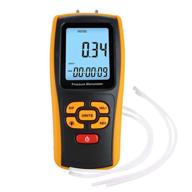
Portable Handheld Manometer 📏 for Accurate Pressure Differential Measurement

5 Review
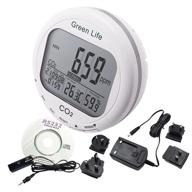
🌬️ Advanced 3-in-1 Indoor Air Quality Monitor with CO2/RH/Temp Data Logging and Audible Alarm - NDIR Sensor Technology

8 Review
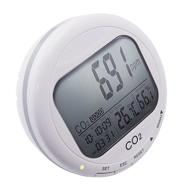
🌡️ Continuous Temperature Monitoring with Relative Humidity Integration

4 Review

🔍 Dioxide Controller for Digital Gas Monitoring

5 Review


